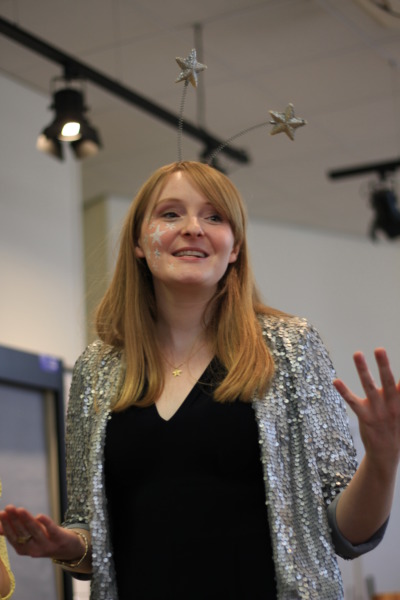Whenever I talk about children’s poetry, I end up using the word ‘joy’. Multiple times. Sometimes I throw in a ‘delight’ or two as well. I’ll do that here, too, because it’s the key point I want to get across: it is a total joy to read, write and perform children’s poetry, and one I hope lots of people will share with me, as I set sail on my upcoming course To Sea in a Sieve: Writing Poems for Children.
There’s a thrilling variety of children’s poetry being written right now: I have recently been delighting in poems by Joseph Coelho, Rachel Rooney, George Szirtes and Kate Wakeling, to name a few. I love that children’s poems don’t assume I am politely willing to give them a chance; they rejoice in grabbing my attention and pulling me into the action. And once I’m in, the best poems – behind the rhythm, rhyme and accessible presentation – tackle the same complex issues as adult poems, with the same thoughtfulness and linguistic variety. They just happen to be great fun, while they’re at it.
I find writing children’s poetry a joyful thing because I know that I have a very open-minded reader. I can try a huge range of approaches, free from any expectation except that my poem will be stimulating in some way. I have found that writing for children helps me think more clearly about the reader in my adult poems, too. Children won’t read, listen or clap just to be kind, so it is a useful discipline to learn: the need to write in a clear, accessible way whilst still rejoicing in the ambiguity and unpacking of meaning.

Me, at the launch of the Emma Press anthology ‘Watcher of the Skies: Poems about Space and Aliens’
To Sea in a Sieve is designed for people who have never written for children before, as well as those who have. If you are new to writing for young readers, then your knowledge, experience and love of poetry are the perfect starting point – you’ll just be applying them in a new context. Many of the poets in Myths and Monsters, one of the children’s poetry anthologies I co-edited with The Emma Press, were writing for children for the first time; almost all have kept doing so, because they loved it so much. If you have written for children before, then you’ll know what I am talking about.
More recently, I have found myself often performing my poems for school groups and here is yet more joy: seeing young people swept into a world that I’ve created – joining in, doing actions or just listening intently. It is the most rewarding feedback possible. On the course, we’ll be discussing how to take this performance element into consideration during the writing process, and tips for presenting poems to a young audience, and building a small repertoire (I’ve found it’s important to always have a few pieces ready in your pocket, ones that work well equally on a stage or a square of carpet at the front of the classroom).
I have learnt so much about working with children’s poetry through listening to other children’s poets, and I am excited to be part of a new group of like-minded writers. I am particularly looking forward to writing new poems that help young readers make the often difficult leap from primary school to ‘grown up’ poems, and which give them the language to make better sense of a complicated world – something those steeped in adult poetry will be well accustomed to.
I hope the poets taking my course will discover new poets to cherish, and how widely and wildly we can range around children’s poetry. We’ll be exploring, recommending and examining some of the best contemporary children’s poems available, as well as old favourites such as Lear, Farjeon, Hughes, Ahlberg and Rosen, and pondering what makes writing ‘for’ children. I’ll be asking students to write in a range of styles and themes, showcase the exciting elasticity of the genre: from short, fizzy, nonsensical experiments to philosophical musings on life’s big themes. We will sneak in information under the cover of silliness, make form into a young reader’s friend, and bust open that tenacious tenet that poems must rhyme. We’ll always be thinking of our audience, which is a great excuse to tap into that mindset ourselves – but we will also explore the responsibilities inherent in writing for those at an impressionable age. Most of all, we will be joyful. Join us!
You bring the Owl, and a useful Cart, and we’ll bring the Rice, and a Cranberry Tart… write poetry for children this Spring on To Sea in a Sieve: Writing Poems for Children, a new online poetry course from the Poetry School. Book online or ring us on 0207 582 1679.
Sounds amazing! I’m joining! Fianna x
That’s fantastic! Look forward to chatting more soon 🙂